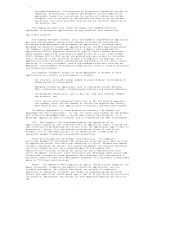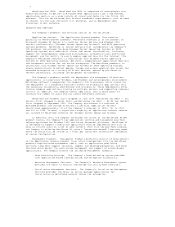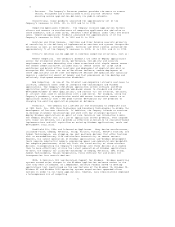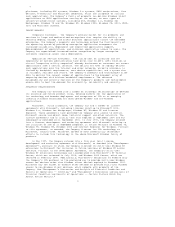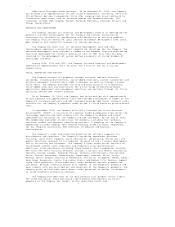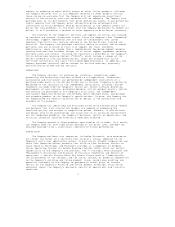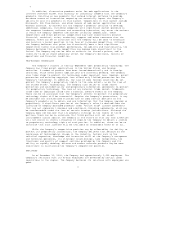Citrix 2000 Annual Report Download - page 15
Download and view the complete annual report
Please find page 15 of the 2000 Citrix annual report below. You can navigate through the pages in the report by either clicking on the pages listed below, or by using the keyword search tool below to find specific information within the annual report. 13
ITEM 7. MANAGEMENT'S DISCUSSION AND ANALYSIS OF FINANCIAL CONDITION AND RESULTS
OF OPERATIONS
OVERVIEW
The Company develops, markets, sells and supports comprehensive delivery
and management software that enables effective and efficient deployment and
management of enterprise applications, including those designed for Microsoft
Windows(R) operating systems and UNIX(R) operating systems. The Company's
Application Servers product line, which comprises the largest source of the
Company's revenue, primarily consists of the MetaFrame(TM) products and related
options. The MetaFrame products, which began shipping in the second quarter of
1998, permit organizations to deploy and manage applications without regard to
location, network connection or type of client hardware platforms.
On May 9, 1997, the Company and Microsoft entered into a License,
Development and Marketing Agreement, as amended (the "Development Agreement"),
which provides for the licensing to Microsoft of certain of the Company's
multi−user software enhancements to Microsoft's Windows NT Server and for the
cooperation between the parties for the development of certain future multi−user
versions of Microsoft Windows NT Server, Terminal Server Edition and Microsoft
Windows 2000 (collectively, "Windows Server Operating Systems"). The Development
Agreement also provides for each party to develop its own enhancements to the
jointly developed products, which may provide access to Windows Server Operating
Systems base platforms from a wide variety of computing devices. In June 1998,
the Company released its MetaFrame product, a Company−developed enhancement that
implements the Independent Computing Architecture (ICA(R)) on the Windows Server
Operating Systems. In addition, Microsoft and the Company have agreed to engage
in certain joint marketing efforts to promote the use of Windows Server
Operating Systems−based multi−user software and the Company's ICA protocol.
Pursuant to the terms of the Development Agreement, in May 1997, the Company
received $75 million as a non−refundable royalty payment for engineering and
support services to be rendered by the Company. Under the terms of the
Development Agreement, as amended, the Company received additional payments
totaling $100 million. No additional payments are due pursuant to the
Development Agreement.
As a result of the Development Agreement, the Company continues to support
the Microsoft Windows NT platform, but the MetaFrame products and later releases
no longer directly incorporate Windows NT technology. For example, the Company's
MetaFrame for UNIX products enable the deployment and management of applications
designed for UNIX operating systems such as Sun Solaris, HP−UX, or IBM−AIX
(collectively, "UNIX Operating Systems.") The Company plans to continue
developing enhancements to its MetaFrame products and expects that these
products and associated options will constitute a majority of its revenues for
the foreseeable future.
Revenue is recognized when earned. The Company's revenue recognition
policies are in compliance with the American Institute of Certified Public
Accountants Statement of Position ("SOP") 97−2 (as amended by SOP 98−4 and SOP
98−9) and related interpretations, "Software Revenue Recognition." Product
revenues are recognized upon shipment of the software product only if no
significant Company obligations remain, the fee is fixed or determinable, and
collection of the resulting receivable is deemed probable. The initial fee of
$75 million relating to the Development Agreement is being recognized ratably
over the five−year term of the contract, which began in May 1997. The additional
$100 million received pursuant to the Development Agreement, as amended, is
being recognized ratably over the remaining term of the contract, effective
April 1998. In the case of non−cancelable product licensing arrangements under
which certain Original Equipment Manufacturers ("OEMs") have software
reproduction rights, initial recognition of revenue also requires delivery and
customer acceptance of the product master or first copy. Subsequent recognition
of revenues is based upon reported royalties from the OEMs. Revenue from
packaged product sales to distributors and resellers is recorded when related
products are shipped. The Company also distributes software through electronic
licensing. These revenues are recognized when the customer is provided with the
activation keys that allow the customer to take immediate possession of the
software pursuant to an agreement or purchase order. In software arrangements
that include rights to multiple software products, post−contract customer
support ("PCS"), and/or other services, the Company allocates the total
arrangement fee among each
13


